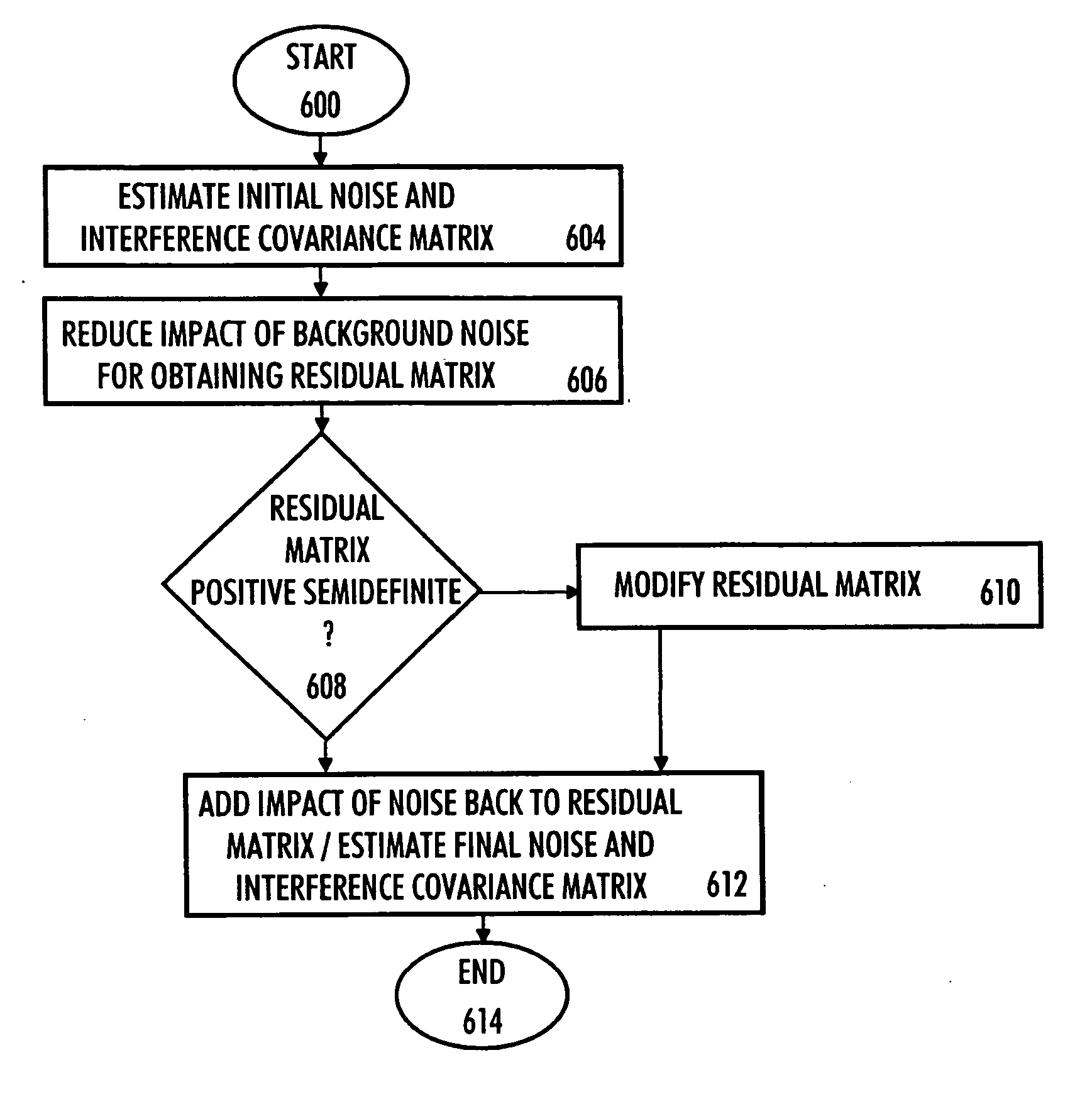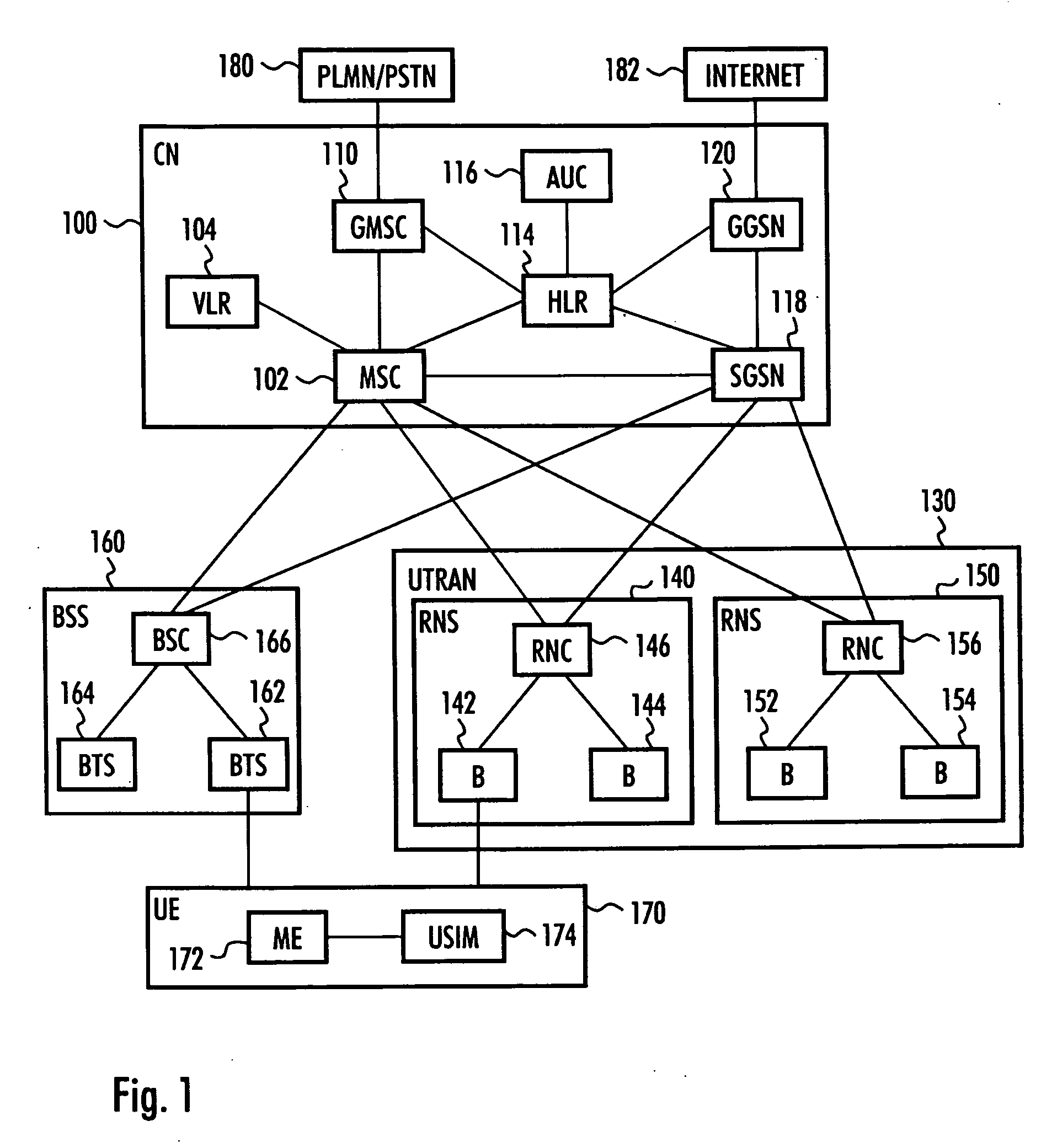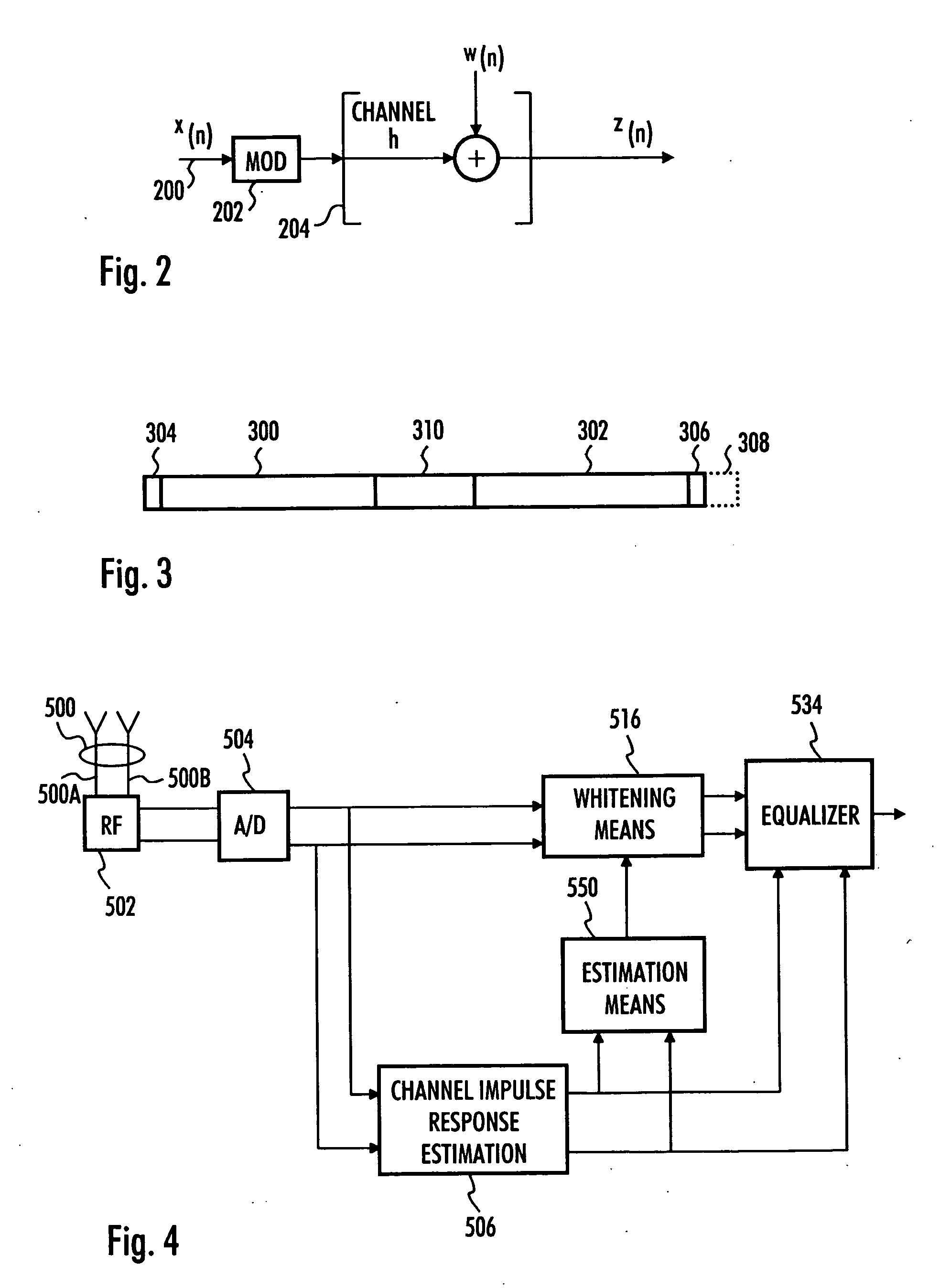Method of estimating noise and interference covariance matrix, receiver and radio system
- Summary
- Abstract
- Description
- Claims
- Application Information
AI Technical Summary
Benefits of technology
Problems solved by technology
Method used
Image
Examples
Embodiment Construction
[0022] With reference to FIG. 1, examine an example of a data transmission system in which the preferred embodiments of the invention can be applied. FIG. 1 is a simplified block diagram that describes the most important parts of the radio systems on the network element level. The structure and functions of the network elements are not described in detail, because they are commonly known. The described solution may be applied in digital TDMA, FDMA and CDMA radio systems, although it is not restricted to them.
[0023] In FIG. 1, a core network CN 100 represents the radioindependent layer of the telecommunications system. The radio systems are shown as a first radio system, i.e. radio access network 130, and a second radio system, i.e. base station system BSS 160. In addition, the figure shows user equipment UE 170. The term UTRAN comes from the words UMTS Terrestrial Radio Access Network, i.e. the radio access network 130 is implemented using wideband code division multiple access WCD...
PUM
 Login to View More
Login to View More Abstract
Description
Claims
Application Information
 Login to View More
Login to View More - R&D
- Intellectual Property
- Life Sciences
- Materials
- Tech Scout
- Unparalleled Data Quality
- Higher Quality Content
- 60% Fewer Hallucinations
Browse by: Latest US Patents, China's latest patents, Technical Efficacy Thesaurus, Application Domain, Technology Topic, Popular Technical Reports.
© 2025 PatSnap. All rights reserved.Legal|Privacy policy|Modern Slavery Act Transparency Statement|Sitemap|About US| Contact US: help@patsnap.com



